Guidelines on Examination of Absolute grounds
www.boip.int
1 Guidelines on Examination of Absolute grounds CONTENT INTRODUCTION 3 PROCEDURE AND FORMALITIES 4 How to avoid refusal? 4 Classification of goods and services 4 Attach to the application the evidence of acquired distinctiveness 5 Course of the procedure 5 Provisional refusal decision 5 Filing an objection 5 Third party submissions 6 Explanation of deadlines 6 Content of the objection 7 The trademark cannot be modified 7 Withdrawal of trademark application or limitation of goods and services 7 Benelux trademark 7 International registration 8 When can a trademark be withdrawn or limited? 8 Response to the objection 8 Final refusal and appeal 9 ABSOLUTE GROUNDS FOR REFUSAL 10 General principles 10 Public interest and scope of the examination 10 Public perception 10 Own merits 10 Is Article 2.23(1)(b) BCIP relevant? 11 Article 2.2bis(1)(a) in conjunction with Article 2.1 BCIP, signs which cannot constitute a mark 12 Signs that may constitute a mark 12 Signs that cannot constitute a mark 13 Article 2.2bis(1)(b) BCIP, lack of distinctive character 15 Simple figurative elements 15 Complex signs such as diagrams 16 Three-dimensional marks 17 Colour Marks 19 Portraits 20 Slogans 20 Other types of non-traditional trademarks 21 Graphic representation of the descriptive information 21
2 Guidelines on Examination of Absolute grounds Article 2.2bis(1)(c) BCIP, descriptive marks 24 Characteristics of products or services 24 Languages in the Benelux 25 Combination of descriptive words 26 Non-existent word 27 Common verbal elements 28 Common prefix or suffix 28 Logical abbreviation 28 Words with alternative spelling 29 Geographical names 29 INN (International non-proprietary names) 30 Known titles or names of known persons 31 New concept 31 Descriptive figurative marks 31 Exclusion of certain properties 32 Article 2.2bis(1)(d) BCIP, customary indications 33 Article 2.2bis(1)(e) BCIP, shape or other characteristic 34 Essential characteristics 35 Nature of the goods 35 Technical result 36 Substantial value 36 Article 2.2bis(1)(f) BCIP, trademarks contrary to public policy or morality 38 Article 2.2bis(1)(g) BCIP, deceptive mark 39 Article 2.2bis(1)(h) BCIP, Article 6ter of the Paris Convention 40 Article 2.2bis(1)(i), (j), (k), and (l) BCIP, trademarks excluded from registration on the grounds of contravention of the conventions on geographical or product indications; “agri” protection 42 Examination 43 Plant Varieties 43 Article 2.2bis(3) BCIP, acquisition of distinctiveness through use (acquired distinctiveness) 44
1. The purpose of these guidelines is to clarify the criteria for examining trademarks on absolute grounds on the basis of Article 2.2bis of the Benelux Convention on Intellectual Property (hereinafter: “BCIP”) and the way in which the Benelux Office for Intellectual Property (hereinafter: “BOIP” or “Office”) puts them into practice. The aim is to inform the user and increase the predictability of the Office’s decisions.
2. The case law has developed since the previous guidelines (1 January 2009) at both European and Benelux level. The result of these decisions has influenced the assessment of trademarks on absolute grounds. In addition, since 2009, the BCIP has undergone a number of fundamental changes, as a result of which the old guidelines were no longer in line with the applicable regulations on a number of points.
3. In addition, BOIP also takes into account the agreements reached under the European Union Intellectual Property Network (EUIPN) Convergence Program which promotes the harmonization (convergence) of practices among intellectual property offices. The Convergence Program covers several projects where IP offices have already agreed on certain common practices. These common practices are published in the form of common communications with the aim of increasing transparency, legal certainty and predictability for both examiners and users throughout the EU.
4. These Guidelines refer as far as possible to the Articles of the BCIP, as well as to the Rules of the Implementing Regulation (hereinafter: “IR”) and the relevant case law of the Court of Justice of the European Union (hereinafter: “CJEU”) and the Benelux Court of Justice (hereinafter: “BenCJ”).
3 Guidelines on Examination of Absolute grounds
INTRODUCTION
PROCEDURE AND FORMALITIES
How to avoid refusal?
Classification of goods and services
5. The fee system is based on a basic trademark registration for a single class. This is usually sufficient to designate the goods or services marketed under the trademark.
6. The designation of the goods or services determines to a large extent the scope of protection of the trademark. It is therefore important that the list of goods and services be as clear and precise as possible. The use of overly broad and vague terms is not recommended1. In practice, it appears that applications are often made for a standard list of goods and/or services. The application should focus on the goods and services which the trademark applicant actually markets or intends to market in the near future. It is therefore advisable to avoid as far as possible a standard list or a list containing only general terms (class headings).
7. In practice, it is also common for a trademark application to cover different classes, even though the trademark proprietor’s activities do not cover all these classes. What is important is that the trademark application must relate to goods and services which are supplied to third parties and for which market opportunities are sought. Use in respect of goods or services that a trademark applicant only uses for himself (in the course of his own business) does not constitute trademark use. Classes are organised in such a way as to group together related or affiliated goods or services. For this reason, a single class will usually be sufficient for a trademark application.
Example: Applicants very often mention the service “advertising” in class 35 because they publish ads for themselves. In most cases, however, these applicants are not advertising agencies or other businesses which, by their nature, provide the “advertising” service to third parties. When you advertise yourself, it is not a class 35 service.
Example: Entrepreneurs who offer their clients clothing bearing the name of their company or the brand name of their product as a business gift regularly refer, in addition to products manufactured under the trademark, to “clothing, footwear and headgear” in Class 25. That too is inappropriate, since they are neither producers nor traders in clothing. Indeed, there is no intention to find an outlet for those goods2.
8. When assessing the application, only the goods and services for which the mark was applied for shall be taken into consideration. The actual use of the trademark is in principle irrelevant. In certain cases, a refusal can be avoided by taking a critical look at the list of goods or services for which the application is made. Such a critical attitude may also reduce the likelihood of oppositions. In this way, unnecessary costs for additional classes, as well as possible future conflicts with other trademark owners can be avoided.
9. A precise list of products and services can also play a role with regard to acquired distinctiveness. In the case where a sign acquired distinctiveness through use, the mark will only be accepted for goods and services which have actually been put on the market before the date of application for the mark and for which the public has begun to perceive the sign as a trademark due to its prolonged and/or intensive use by the trademark owner.
1 CJEU, 19 June 2012, C-307/10, IP Translator, ECLI:EU:C:2012:361.
2 See also in this context CJEU, Wellness, C-495/07, 15 January 2009, ECLI:EU:C:2009:10.
4 Guidelines on Examination of Absolute grounds
Attach to the application the evidence of acquired distinctiveness
10. A mark which does not have distinctive character in itself may acquire that character through use. An initially (ab initio) nondistinctive mark may nevertheless be registered as a trademark if it has acquired distinctiveness through use prior to the date of the trademark application (Article 2.2bis(3) BCIP). However, the applicant must prove this use by submitting documentary evidence.
11. The assertion that a mark has acquired distinctiveness through use is often a reaction to the refusal of a descriptive and/or non-distinctive mark. In order to facilitate an efficient procedure, it is recommended that this position, if it is at issue, is already adopted at the time of the trademark application and that the necessary evidence (evidence of acquired distinctiveness) is also submitted. In this context, it is also recommended, as explained above, that the list of goods and/or services should contain only those goods and/or services for which the mark has acquired distinctiveness. Of course, this does not alter the fact that the list may also contain goods and services for which the mark is not descriptive and/or is distinctive.
Course of the procedure
Provisional refusal decision
12. For each trademark application, BOIP examines whether there is an absolute ground for refusal. If this is the case, the Office sends a decision of provisional refusal to the applicant or his representative. In the case of an international application, BOIP sends the provisional decision to the International Bureau (WIPO), which forwards it to the applicant or representative and enters it in the International Register.
13. The Office may limit a refusal to certain goods or services. In that case, a partial refusal shall be issued.
14. The decision of provisional refusal shall state the grounds on which the mark was refused. Reference is made to the relevant Articles of the BCIP. Where appropriate, the decision also contains additional reasons3
15. The Office is not required to give reasons for refusing an application for each individual product or service. If a ground for refusal is considered to apply to an entire category or class of goods or services, it is sufficient for the Office to provide an overall reasoning for that category or class4
Filing an objection
16. If the trademark applicant does not agree with the provisional refusal decision, he may oppose it by filing an objection. The filing of the objection is generally and preferably done electronically5
17. The objection against a provisional refusal may be lodged by the applicant himself or by a representative (agent), see Rule 3.6 IR. The latter is presumed to be authorized by the applicant and is therefore, in principle, not required to produce a power of attorney, see Rule 3.7 IR.
3 BenCJ, 6 October 2011, A 2010/8, Bodystyling+.
4 CJEU, 15 February 2007; C-239/05, The Kitchen Company, ECLI:EU:C:2007:99.
5 See the Director-General’s Rules for Electronic Submission, Additional Rules under Rule 3.4 IR
5 Guidelines on Examination of Absolute grounds
Third party submissions
18. Examination on absolute grounds is a procedure between BOIP and the applicant for a trademark. Sometimes third parties contact BOIP in connection with a pending trademark application because they believe that the application should be refused. However, the BCIP does not provide a procedure for third party observations, and BOIP is not obliged to take them into account.
19. If a third party believes that a Benelux trademark or an international registration (with designation of the Benelux) has been wrongly registered, that third party may initiate cancellation proceedings before BOIP.
Explanation of deadlines
20. After the provisional refusal of a trademark application, a period of three months is first set for filing arguments against the provisional refusal, also known as an objection. This period runs from the date of the provisional refusal by BOIP; this also applies in the case of an international application (i.e. the objection period does not run from the date of forwarding by WIPO). If no response is received within this period, the period shall be automatically extended by one month. If no reply is received by the end of the fourth month, the time limit for lodging an objection has expired. If a reply is received within the first four months, BOIP will extend the period for filing an objection up to a maximum of six months. In addition, at the written request of the applicant (or his or her representative), within the first four months, the time limit may also be extended to the maximum period of six months.
21. After lodging an objection, the applicant shall be free to submit further arguments and/or evidence within the time limit set. BOIP will endeavour to respond to objections within one month of receipt. In principle, the sooner an objection is submitted, the more time will be left to complete the arguments or submit evidence following BOIP’s response to the objection submitted.
22. In practice, it appears that part of the objections is lodged on the last day of the time limit set for this purpose. It is therefore often impossible to inform claimants of any defects in time. This also eliminates the possibility of a new exchange of arguments. In particular, where acquired distinctiveness is invoked, it is advisable to do so well in advance of the expiry of the time limit for submitting objections and to submit the supporting documents. The applicant then retains the possibility of supplementing his arguments and documents if the Office has found them insufficient.
23. When dealing with objections, BOIP takes into account the interests of the applicant, in particular the possibility of presenting additional arguments. As a result, there may be occasions when, in processing objections, priority is given to responses submitted well before the expiry of the objection period over those for which the applicant would no longer have time to submit additional arguments.
6 Guidelines on Examination of Absolute grounds
Content of the objection
24. An objection may contain all the facts and arguments which, in the opinion of the applicant for the trademark, demonstrate that the trademark should be registered. It is important to put forward all arguments within the time limit for submitting an objection. This is no longer possible after the expiry of this time limit. Even if an appeal is lodged against the final decision of the Office, what has been submitted at the objection stage is decisive for what can be put forward on appeal. The Benelux Court of Justice has ruled in this respect that the courts of appeal “may therefore rule only on the merits of the refusal [of the Office] to register the application; that this implies that [the courts of appeal] may take into consideration only those elements on which [the Office] has based or should have based its decision; that it follows that [the courts of appeal] may not hear claims which are outside the scope of the decision of [the Office] or which have not been submitted to it”.6
25. However, new documents relating to the initial application submitted in the registration procedure may still be submitted in appeal proceedings7. However, it goes without saying that it is advantageous for the economy of the proceedings if the documents are submitted at the earliest possible stage.
The trademark cannot be modified
26. Once the application has been submitted, it is not possible to amend the trademark after publication of the trademark application. In order to amend a trademark, a new application must be made. This also applies to the extension of the list of goods and services. However, it is possible to limit the list of goods and services.
Withdrawal of trademark application or limitation of goods and services
Benelux trademark
27. It is always possible to withdraw a trademark application after receiving a provisional refusal. In this way, publication of the final refusal can be avoided. If the trademark applicant no longer wishes to respond to the provisional refusal and therefore defers to BOIP’s refusal decision, the withdrawal of the application for administrative reasons is also desirable. However, the withdrawal of a trademark application does not lead to a refund of the statutory fees paid. The IR does not provide for this possibility.
28. If a trademark has been refused for part of the goods or services and the applicant does not wish to oppose it, it is advisable to limit the trademark application so that only the accepted goods or services remain. In this way, a partial final refusal can be avoided.
29. It is up to the applicant of a trademark to make any limitation in the list of goods or services as indicated in the application8 The Office will not, in principle, make a proposal to that effect. A request for a limitation of the list of goods or services will only be taken into consideration if it is expressed unconditionally and unambiguously.
6 BenCJ, 15 December 2003, A 2002/2, Langs Vlaamse Wegen.
7 BenCJ, 29 June 2006, A 2005/1, EUROPOLIS 1.
8 See also the Opinion of Advocate General Sharpston in The Kitchen Company, ECLI:EU:C:2006:450.
7 Guidelines on Examination of Absolute grounds
30. As indicated above, the classification of a trademark must be formulated as clearly and precisely as possible, indicating the goods or services to which the trademark application relates in a positive manner. A refusal based on the descriptive character of the mark cannot be avoided by excluding (in a negative manner) from the list the described characteristic of the goods or services9
Example: If a trademark application for the word SWEATER mentions, in the list of goods in Class 25 “Clothing excluding sweaters”, this will not result in registration of the mark.
Example: If a trademark application for the word VIOLIN mentions, in the list of services in class 41, “Music education other than violin lessons”, this will not result in the registration of the trademark for those services.
International registration
31. The above also applies to the refusal of international registrations. In this case, an application for renunciation of protection for the Benelux must be submitted directly (or via the office of origin) to the WIPO. If a trademark has been refused for part of the goods and services and the applicant does not wish to object, it is advisable to renounce protection for the part of the goods and/or services to which the refusal applies. In this way, a final (partial) refusal can be avoided. Moreover, experience shows that the necessary time often elapses between the filing of the request for renunciation of protection and its actual recording by WIPO in the International Register. If this course of action is followed, it is advisable to inform BOIP so that the file can be suspended pending the processing of the application.
When can a trademark be withdrawn or limited?
32. Withdrawal of the entire application, or in the case of a partial refusal of the goods or services to which it relates, is possible until the refusal becomes final within the meaning of Article 2.11(5) BCPI (i.e. as long as an appeal is still possible).
33. A limitation of the list of products and services can only be requested during the objection period. Thereafter, and also in the event of an appeal, this is no longer possible10. This would change the nature of the dispute (see paragraph 24).
Response to the objection
34. After an objection has been filed, BOIP will reassess the decision to (partially) refuse an application.
35. BOIP may review the provisional refusal decision following the objection. BOIP may also conclude that the application should not be refused in whole, but in part.
36. In addition, it is also possible that BOIP may approve a proposal to limit the list of goods and services so that the trademark can still be registered for a part of the goods and services.
37. If BOIP does not agree with the arguments presented in the objection, it will respond by sending a written reply (response to an objection against a provisional refusal) and the provisional refusal will be upheld.
8 Guidelines on Examination of Absolute grounds
9 CJEU, 12 February 2004, C-363/99, Postkantoor. 10 BenCJ, 15 December 2003, A 2002/2, Langs Vlaamse Wegen.
Final refusal and appeal
38. At the end of the objection period, BOIP will take a final decision on the basis of all the facts and circumstances that have been brought to its attention in good time. This decision can be appealed to the Benelux Court of Justice on the basis of Article 1.15bis(1) BCIP. The time limit for appeal is two months from the notification of the final decision.
39. Even if the applicant has not submitted an objection against the provisional refusal decision, it is still possible to appeal against the final refusal decision11
40. For an appeal against a final refusal, the Rules of Procedure of the Benelux Court of Justice lay down the proceedings for representation12. The Office may be represented in the appeal proceedings by a member of staff appointed for that purpose.
41. The material scope of the appeal is determined by the arguments put forward by the applicant at the objection stage (see paragraph 24). Furthermore, in view of the importance of preventing the abusive registration of trademarks, both BOIP and the Benelux Court of Justice are obliged to examine all the grounds for refusal referred to in Article 2.2bis(1) BCIP at each stage of the procedure and, if necessary, to put forward new grounds13
9 Guidelines on Examination of Absolute grounds
11 BenCJ, 6 October 2011, A 2010/8, Bodystyling +. 12 http://www.courbeneluxhof.be/fr/basisdocumenten.asp 13 BenCJ A 99/1 of 1 December 2004, Postkantoor, as well as BenCJ A 2005/2 and A 2005/3 of 29 June 2006, SHOP & SERVICE and EXECUTIVE.
ABSOLUTE GROUNDS FOR REFUSAL
General principles
Public interest and scope of the examination
42. The limits and interpretation set by law and case law provide the tools on the basis of which BOIP decides whether or not to refuse an application. The legal grounds for refusal must be interpreted in accordance with the ratio legis underlying them, which differs depending on the ground. The examination on absolute grounds is in the public interest, which is the basis for a possible refusal.
43. The Office attaches importance to conduct an examination that is as factual and concrete as possible, taking an approach that is as close as possible to the (economic) reality in which the trademark will be used and in light of the sector in which the applicant is active, according to the trademark application.
Example: A consumer browsing a hardware store will understand that the term “nail” refers to thin metal pieces used in construction. A consumer looking for a spa treatment will think of manicure services when he sees the same “nail” designation.
44. The examination in the context of a trademark application is a concrete assessment of the trademark in relation to the goods and/or services applied for and the market concerned. The examination should not be minimal, but strict and complete in order to avoid undue registration of trademarks14
Public perception
45. BOIP’s starting point for the examination is that the likely perception of the relevant public in the presence of the trademark applied for must be taken into account. The relevant public is defined by the CJEU as “an average consumer, normally informed and reasonably observant and circumspect” of the relevant category of goods or services15
Example: A descriptive indication in Latin applied for as a word mark will generally be distinctive because the general public is unaware of this language. However, if such an application is made for surgical material, this situation will change. Physicians generally have some knowledge of Latin, as this language is commonly used in their profession, as is the case in the legal world.
Own merits
46. Examination of trademark applications shall be carried out on the basis of the applicable law. Each application shall be examined on its own merits. Refusal or acceptance by the Office, a foreign registration office or EUIPO of similar or even identical applications cannot and should not play a decisive role in this respect, although earlier registrations may of course be indicative in the initial assessment16. However, the Office is not bound by earlier decisions, since the question whether a sign can be registered as a trademark depends in each specific case on the circumstances applicable in that case17
14 CJEU, 6 May 2003, C-104/01, Libertel, ECLI:EU:C:2003:244.
15 CJEU, 16 July 1998, C-210/96, Gut Springenheide, ECLI:EU:C:1998:369.
16 CJEU, 12 February 2009, C39/08 to C43/08, Bild Digital, ECLI:EU:C:2009:91.
17 CJEU, 12 February 2004, C-218/01, Henkel, ECLI:EU:C:2004:88.
10 Guidelines on Examination of Absolute grounds
47. Furthermore, general principles of law, such as those known in administrative law, do not mean that BOIP has to accept a trademark application when a similar or identical trademark has already been accepted by any authority. This has been confirmed by the Benelux Court of Justice18
48. The Office must examine each application in the light of the legal criteria set out in the BCIP. If the Office considers that one of these criteria applies, it must refuse registration. The examination procedure on absolute grounds involves, in other words, answering a question of law. This is not a matter of discretion for BOIP.
Is Article 2.23(1)(b) BCIP relevant?
49. It is sometimes argued that it would be superfluous to refuse descriptive marks because others could always use them in a descriptive sense. The legislator expressly opted for a preliminary examination by BOIP, to safeguard the public interest which, in the case of descriptive marks, lies in the fact that other users do not have to defend themselves against invalid marks. Article 2.23(1)(b) BCIP therefore has no bearing on BOIP’s decision whether or not to refuse an application. Another principle would not be in line with the system of Article 2.11 BCIP19
11 Guidelines on Examination of Absolute grounds
18 BenCJ, 29 November 2001, A 99/1, Postkantoor. 19 CJEU, 6 May 2003, C-104/01, Libertel, ECLI:EU:C:2003:244.
Article 2.2bis(1)(a) in conjunction with Article 2.1 BCIP, signs which cannot constitute a mark
50. Article 2.2bis(1)(a) BCIP forms the first step in the examination on absolute grounds. This article refers to Article 2.1 of the BCIP, which defines the signs which may constitute a mark. This article states:
A trademark may consist of any signs, in particular words, including personal names, or designs, letters, numerals, colours, the shape of goods or of the packaging of goods, or sounds, provided that such signs are capable of:
a. distinguishing the goods or services of one undertaking from those of other undertakings; and
b. being represented on the register in a manner which enables the competent authorities and the public to determine the clear and precise subject matter of the protection afforded to its proprietor.
51. The list of signs is not exhaustive. However, it is required that the sign must be capable of distinguishing the goods or services of one undertaking from those of other undertakings and that the signs must be capable of being represented in the register in such a way as to enable the competent authorities and the public to determine clearly and precisely the subject matter of the protection conferred on their owner. The interpretation of this provision is in line with the criteria mentioned by the CJEU in the SIECKMANN case20, namely that the sign must be clear, precise, self-contained, easily accessible, intelligible, durable and objective (hereinafter: “SIECKMANN criteria”)21
Signs that may constitute a mark
52. In practice, in addition to traditional word and figurative trademarks, the following (non-exhaustive) list of types of “nontraditional” trademarks that may be registered can be cited:
Three-dimensional mark
It is one or more representations of the shape of a product or its packaging.
Colour mark
It is a colour or an abstract combination of colours, not linked to a shape. In the case of a single colour, the application must include the representation of the colour as well as a description in accordance with the SIECKMANN criteria, bearing in mind that the CJEU explicitly stated in the Libertel22 case that an internationally recognised colour code meets these criteria. An application for a colour mark which does not meet these requirements will be refused.
Example: An application for an orange colour sample with the description ‘orange’ will be refused.
Example: The application for an orange-coloured sample with the description ‘orange; PMS 144’ will not be refused on the basis of Article 2.2bis(1)(a) BCIP, because it meets the requirements for a valid application. However, as set out hereafter in these Guidelines, such a colour mark will, as a rule, be refused under Article 2.2bis(1)(b) BCIP (lack of distinctiveness).
Furthermore, in the case where a combination of colours is applied for as a trademark, the representation must also include a systematic arrangement associating the colours concerned in a predetermined and uniform manner23. This is not the case where the registration of a trademark allows for a plurality of reproductions which are neither determined in advance nor uniform24
20 CJEU, 12 December 2002, C-273/00, Sieckmann, ECLI:EU:C:2002:748.
21 Directive (EU) 2015/2436 of the European Parliament and of the Council of 16 December 2015 to approximate the laws of the Member States relating to trade marks, recital 13.
22 CJEU, 6 May 2003, C-104/01, Libertel, ECLI:EU:C:2003:244.
23 CJEU, 24 June 2004, C-49/02, Heidelberger Bauchemie, ECLI:EU:C:2004:384.
24 CJEU, 29 July 2019, C-124/18, Red Bull, ECLI:EU:C:2019:641.
12 Guidelines on Examination of Absolute grounds
Sound mark
It is a sound or a tune. A sound mark may be applied for by filing an audio file or by means of a stave divided into bars and containing, in particular, a clef, musical notes and rests whose form indicates the relative value and, where appropriate, accidentals25. As part of the precision requirement, it is recommended that the musical instrument also be mentioned in the case of a staff (see paragraphs 50-51).
Pattern mark
A pattern mark consists exclusively of a set of elements that are regularly repeated (in the form of a pattern).
Position mark
This type of mark is characterised by the specific way in which it is placed or affixed on the product.
Motion mark
A motion mark consists of, or extends to, a movement or change in position of the elements of the mark.
Multimedia mark
A multimedia mark consists of, or extends to, a combination of image and sound, for example a short fragment of a video with sound.
Hologram mark
A hologram mark is composed of elements with holographic characteristics.
53. The definitions of ‘non-traditional’ trademark types and how they are applied for were the subject of the convergence programme (see paragraph 3). BOIP’s electronic filing application is configured in such a way that, when selecting the type of mark, the correct file format is automatically indicated. Current information on the electronic file formats accepted by BOIP can be found here
Signs that cannot constitute a mark
54. Although the above list is not exhaustive, there are a number of examples of signs that cannot constitute a trademark.
Olfactory and taste marks
55. The application for an olfactory mark is not possible at the moment. Neither a description of an odour in a chemical formula, nor the deposition of a sample of an odour, nor the combination of these elements meet the SIECKMANN criteria26
The CJEU has not given any alternative solutions that would fulfil these conditions. Nor is the Office aware of any such methods. The Office considers that the same applies to taste marks.
25 CJEU, 27 November 2003, C-283/01, Shield Mark, ECLI:EU:C:2003:641. 26 CJEU, 12 December 2002, C-273/00, Sieckmann, ECLI:EU:C:2002:748.
13 Guidelines on Examination of Absolute grounds
Variable signs
56. The application for a variable sign, such as an abstract concept or an idea, also comes up short against the SIECKMANN criteria. For example, the CJEU decided that a claim that covers every conceivable form of a transparent receptacle or collection compartment forming part of the external surface of a vacuum cleaner does not constitute a sign within the meaning of this provision27.
Very simple or very complex signs
57. In the section on lack of distinctive character (Article 2.2bis(1)(b)), a number of examples are given of signs which are too simple (e.g. a banal geometric shape) or too complex (e.g. a diagram or flow chart). In certain cases, it may also be said that a sign which is too simple or too complex does not constitute a sign capable of constituting a trademark within the meaning of Article 2.2bis(1)(a) BCIP, where it is in itself incapable of distinguishing the goods or services of one undertaking from those of other undertakings, even independently of the goods or services for which the sign is applied for28
27 CJEU, 25 January 2007, C-321/03, Dyson, ECLI:EU:C:2007:51. 28 CJEU, 6 May 2003, C-104/01, Libertel, ECLI:EU:C:2003:244.
14 Guidelines on Examination of Absolute grounds
Article 2.2bis(1)(b) BCIP, lack of distinctive character
58. Article 2.2bis(1)(b) BCIP states that signs devoid of any distinctive character must be refused. The reason for this ground lies in (the public interest underlying) the essential function of the trademark. That function is to guarantee, to the consumer or end user, the identity of origin of the goods or services designated by the mark, by enabling him to distinguish without any likelihood of confusion those goods or services from those of another origin29
59. This article is a framework provision. Signs which are to be refused under the criteria of Article 2.2bis(1)(c) and (d) also fall under the criteria of Article 2.2bis(1)(b). Descriptive (c) and customary (d) indications are by definition devoid of any distinctive character. However, the reverse is not always true: if a sign is not descriptive or does not constitute a customary indication, it should in no way be concluded that it has distinctive character. Article 2.2bis(1)(b) therefore also constitutes a ground for refusal giving rise to an autonomous examination30
Example: The trademark application ‘I love you’ is so trivial and general that (even if it was not descriptive of the goods and services in question), it is not capable of distinguishing the identity of one undertaking from that of another undertaking.
Example: The reproduction of Rembrandt van Rijn’s painting ‘The Night Watch’ is one of the most famous paintings in the world and the average consumer of all possible products in the Benelux will recognise it as such. The consumer will therefore not perceive it as a trademark to distinguish the origin of the goods and services for which it is requested, but (purely) as a decoration31.
60. The question of whether a trademark is distinctive often arises in particular in the following cases.
Simple figurative elements
61. A very simple sign, consisting only of a basic geometric figure, such as a circle, line, rectangle or triangle, is not capable of conveying a message that the public will be able to remember, so it is not a mark.
29 CJEU, 21 October 2004, C-64/02, Das Prinzip der Bequemlichkeit, ECLI:EU:C:2004:645; CJEU, 15 September 2005, C-37/03, BioID, ECLI:EU:C:2005:547; CJEU, 8 May 2008, C-304/06, Eurohypo, ECLI:EU:C:2008:261; CJEU, 21 January 2010, C-398/08, Vorsprung durch Technik, ECLI:EU:C:2010:29.
30 CJEU 12 February 2004, C-363/99, Postkantoor; ECLI:EU:C:2004:86.
31 Court of Appeal The Hague, 29 August 2017, 200.205.771/01, ECLI:NL:GHDHA:2017:2446, De Nachtwacht.
15 Guidelines on Examination of Absolute grounds
Complex signs such as diagrams
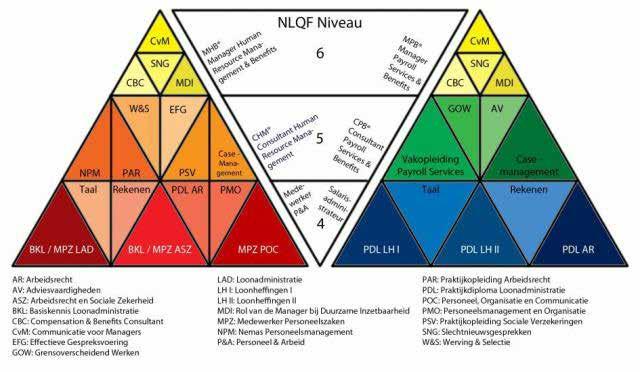
62. A trademark can also be too complex. Trademarks that consist, for example, of a diagram, chart or table containing certain information are often too complex to distinguish the goods and services of one undertaking from those of other undertakings. Such signs cannot constitute a trademark and will already be refused on the ground “under a”. Such marks may also be refused on the ground of lack of distinctive character (under b) and are generally of a descriptive nature (under c). This is why BOIP has, for example, refused the following trademark applications:
Cl 41 education

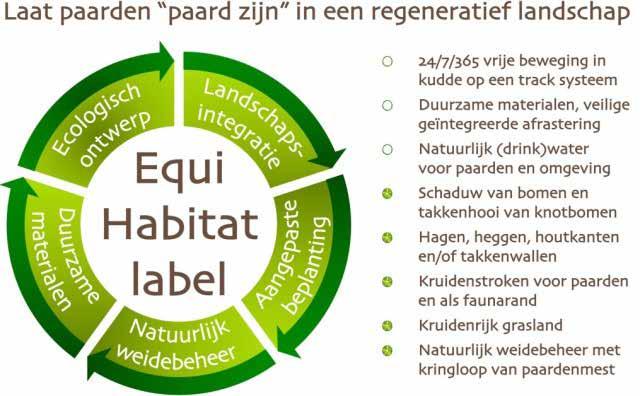
Cl 44 advice on animal care
Cl 11 lighting
63. On the other hand, there are some categories of signs that the public is not used to perceiving as a trademark.
16 Guidelines on Examination of Absolute grounds
Three-dimensional marks
64. The criterion of lack of distinctiveness often applies to three-dimensional marks. The assessment of the distinctive character of three-dimensional marks should not be subject to stricter criteria than for other types of marks. However, in applying those criteria, the perception of the relevant public is not necessarily the same in the case of a three-dimensional mark as in the case of a word or figurative mark, which consists of a sign which is independent of the appearance of the goods which it designates32
65. Three-dimensional marks generally consist of the shape of the products or the shape of their packaging. Apart from exceptional cases, such a shape will not be perceived by the public as a trademark since the public is not accustomed to infer the origin of a product only from its shape or from the shape of its packaging, i.e. without pictures or texts. Thus, it may be more difficult to establish distinctiveness in the case of a three-dimensional mark than in the case of a word or figurative mark33.
Example of an exception: Economic reality shows that in the perfume industry, the shape of the packaging (perfume bottle) often serves as a trademark. A bottle shape requested for the product “perfume” will generally not be refused unless it is a very ordinary bottle.
32 CJEU, 7 October 2004, C-136/02, Mag Instrument, ECLI:EU:C:2004:592.
33 CJEU, 12 February 2004, C-218/01, Henkel, ECLI:EU:C:2004:88; CJEU, 8 April 2003, C-53/01, Linde, ECLI:EU:C:2003:206; CJEU, 6 May 2003, C104/01, Libertel, ECLI:EU:C:2003:244.
17 Guidelines on
of Absolute grounds
Examination
66. As a general rule, however, a three-dimensional mark will be refused on the basis of lack of ab initio distinctiveness. In order to assess whether a mark has distinctive character, the overall impression produced by the mark must be examined34 Only an applied-for shape which deviates significantly from the norm or from what is customary in the market in question, so that it fulfils its essential function as an indication of origin, has distinctive character ab initio35. This significant element must not consist of an ‘arbitrary element’36. A significant deviation seems to be possible only if there is a ‘normative form’ for the products concerned; otherwise, a form will only be added to the existing ‘multiple standard’37 and it is hardly conceivable that the public can deduce the origin of a particular undertaking from it. This may be the case, for example, for the shape of soft toys or dolls, as these products are marketed in a variety of forms. Even if the average public perceives the three-dimensional mark, as a whole, only as a variant of the shape of the goods for which registration of that mark is sought, it may be concluded that it is devoid of distinctive character38
Examples of three-dimensional marks that have been accepted by BOIP (without proof of acquired distinctiveness):
Cl 33 vodka

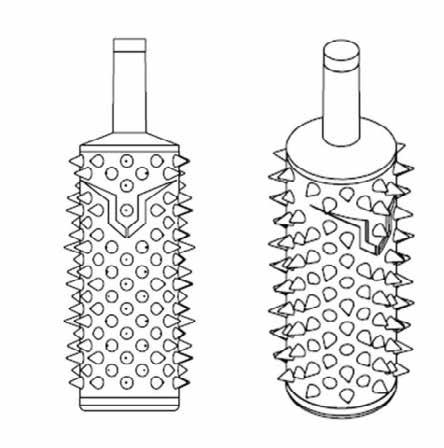
34 CJEU, 25 October 2007, C-238/06, Develey, ECLI:EU:C:2007:635; CJEU, 30 June 2005, C-286/04, Eurocermex, ECLI:EU:C:2005:422.
35 CJEU, 15 May 2014 , C97/12, Louis Vuitton, ECLI:EU:C:2014:324; CJEU, 24 May 2012, C-98/11, Chocoladefabriken Lindt & Sprüngli, ECLI:EU:C:2012:307; CJEU, 22 June 2006, C-24/05, Storck 1, ECLI:EU:C:2006:421; CJEU, 12 February 2004, C-218/01, Henkel, ECLI:EU:C:2004:88.
36 CJEU, 18 June 2002, C-299/99, Philips v Remington, ECLI:EU:C:2002:377.
37 Court of Appeal The Hague, 21 February 2008, R07/1029, ECLI:NL:GHSGR:2008:BC4992, Pleisterdispenser.
38 CJEU, 7 May 2015, C-445/13, Voss, ECLI:EU:C:2015:303.
Guidelines on Examination of Absolute grounds

18
Cl 3 perfumes
Cl 30 chocolate
67. The case law of the CJEU, developed with regard to three-dimensional marks consisting of the appearance of the product itself, also applies when the mark applied for is a figurative mark consisting of the faithful representation of the product. Indeed, in such a case, the sign is not independent of the appearance of the product which it designates either39
68. On the basis of the above-mentioned case law, it can be concluded that many three-dimensional marks will in principle not be distinctive. In order for a three-dimensional trademark to be registrable, it must have acquired distinctive character through use, i.e. through the use that has been made of it in the Benelux. However, acquired distinctiveness through use only plays a role for three-dimensional trademarks that would be refused only for lack of distinctiveness.
69. Where a three-dimensional mark is (also) refused under Article 2.2bis(1)(e) BCIP, it can never be registered, not even if it has a distinctive character, whether or not acquired through use40
70. If a trademark application does not consist solely of a form, but also contains another distinctive element, such as an image or a name, it may possibly be accepted as a trademark. The trademark will be assessed in its overall impression, taking into account, for example, the size of this element, its uniqueness and visibility as a whole. This was the subject of the Convergence Programme CP9
Colour Marks
71. Much of the above also applies to colour marks. In practice, colours are frequently used, particularly on products and in advertisements. As a result, a colour or combination of colours will be seen as an ornament or a means of increasing the attractiveness of a product. Only in exceptional cases may a colour or combination of colours as such have sufficient distinctive character before being used. Such cases will arise at most where the number of goods or services for which the trademark is applied for is very limited and the market concerned is very specific41. Furthermore, the colour applied for must be very unusual for the goods or services concerned.
Example: The colour ‘pink; RAL 4003’ for armoured tanks or submarines would be accepted as a mark. In fact, military vehicles have, by their nature, a camouflage colour.
Example: The colour ‘orange, PMS 144’ for telecommunication services will however be refused. The use of a colour (whatever it is) in relation to these services is usual.
72. Colour marks can acquire distinctive character through use, thanks to the use that has been made of them in the Benelux.
73. If a colour is refused on the basis of the specific grounds for exclusion referred to in Article 2.2bis(1)(e) BCIP because it relates to “another characteristic”, it is excluded from acquiring distinctiveness through use, as is also the case for the three-dimensional marks referred to in that Article (see also paragraph 69).
Example: It is unlikely that the colour orange for safety clothing will ever acquire distinctiveness. In addition, one of the grounds mentioned in Article 2.2bis(1)(e) BCIP may also apply to this colour because this colour is functional for these products. This also means that acquired distinctiveness cannot have as a result that the mark will be registered.
39 CJEU, 22 June 2006, C-25/05, Storck 2, ECLI:EU:C:2006:422; CJEU, 12 February 2004, C-218/01, Henkel, ECLI:EU:C:2004:88.
40 CJEU, 18 June 2002, C-299/99, Philips v Remington, ECLI:EU:C:2002:377.
41 CJEU, 6 May 2003, C-104/01, Libertel, ECLI:EU:C:2003:244.
19 Guidelines on Examination of Absolute grounds
Portraits
74. BOIP presumes that what applies to three-dimensional marks and colour marks also applies to trademark applications that consist of images of persons or portraits, and that these are in principle not distinctive because the public does not perceive them ab initio as trademarks. However, the portrait of a person may, by virtue of the use made of it, become a trademark for certain goods and services. The question is, in particular, whether the public simply recognizes the (famous) person (because it is a famous film actor or singer) and understands that it is merely promoting a certain product. Indeed, recognition of a person does not yet guarantee that the image of that person to the public also fulfils the function of the trademark as a badge of origin for the goods or services in question. The question is whether the portrait is recognised by the public as “the face” of a certain product, irrespective of his or her personal identity.
75. A good example of a portrait that the public perceives as a trademark is that of Colonel Sanders (KFC) for the services of a fast-food restaurant:
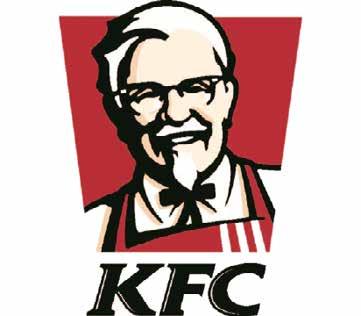
Slogans
76. If a slogan is descriptive, it will be refused on the basis of Article 2.2bis(1)(c) BCIP.
Example: The slogan “Enter for the best deals” (for class 35, electronic equipment retail trade) evokes the quality of service and is purely descriptive.
77. In the case of a slogan which is not descriptive, the criteria for assessing distinctiveness should not be stricter than for other types of marks42.However, the application of those criteria may reveal that the perception of the relevant public is not necessarily the same for all categories of marks. For some categories of trademarks, it may be more difficult to establish distinctiveness than for others43
78. An advertising slogan will generally be sufficiently distinctive if it, as the CJEU has stated, “possess[es] a certain originality or resonance, requiring at least some interpretation by the relevant public, or [sets of] a cognitive process in the minds of that public “, provided it is not descriptive44.
Example: The sign “King of Lightning” (for lamps) would be refused. The slogan is purely laudatory (and will therefore also be refused on the basis of Article 2.2bis(1)(c) BCIP). Although it is not literally a king, the public easily understands that it is indicating that the supplier is specialized in lightning. The fact that a slogan rhymes does not by definition make it distinctive.
42 CJEU, 12 July 2012, C-311/11, Wir machen das Besondere Einfach, ECLI:EU:C:2012:460.
43 CJEU, 21 January 2010, C-398/08, Vorsprung durch Technik, ECLI:EU:C:2010:29.
44 CJEU, 21 January 2010, C-398/08, Vorsprung durch Technik, ECLI:EU:C:2010:29.
20 Guidelines on Examination of Absolute grounds
Other types of non-traditional trademarks
79. The assessment of other types of “non-traditional” marks (such as sound marks, position marks, pattern marks, movement marks, multimedia marks, holograms) must also take into account public perception, which is not necessarily the same as for a word or figurative mark and which, moreover, may vary according to the type of mark. This will have to be assessed on a caseby-case basis. However, it is possible that these types of marks may also be perceived as trademarks if they are capable of fulfilling the essential function of a trademark.
Graphic representation of the descriptive information
80. The criterion of Article 2.2bis(1)(b), BCIP may also apply in addition to the criterion of point c if it concerns a descriptive indication requested in a specific presentation. In such cases, it must be assessed whether the graphic representation chosen is sufficient to remedy the lack of distinctiveness of the words. If BOIP considers that this is not the case, the mark will be refused.
81. In this respect, it should be noted that the relevant public is used to the fact that entrepreneurs, advertising agencies and the graphics industry strive to make their expressions attractive. However, consumers often perceive a descriptive indication in a “nice font” or a “tasteful colour”, which does not mean that it already has sufficient distinctiveness to be registered as a trademark. The addition of a graphic element does not therefore necessarily lead to a mark with distinctive character.
21 Guidelines on Examination of Absolute grounds
82. In this assessment, BOIP also takes into account the Convergence programme CP3. It deals in detail with a multitude of figurative aspects that are considered insufficient as such to confer distinctiveness on a figurative mark with descriptive/nondistinctive words as a whole. These include, for example:
• the font/typeface
• simple colours
• reading signs or other common symbols
• the arrangement of letters
• simple geometric shapes
• descriptive figurative elements
• common figurative elements

Examples of refused figurative marks which contain descriptive indications:
Simple addition of a clearly legible stylized font and simple word arrangement.
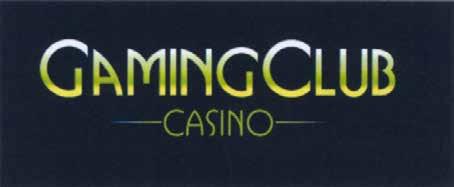
Simple addition of two colours and simple arrangement of words in a frame.

Simple addition of an easy-to-read colour font, two stripes and a simple arrangement of words in a frame.

The representation of a cow for goods in Class 29 (meat) is descriptive.
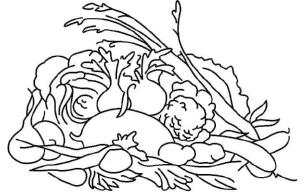

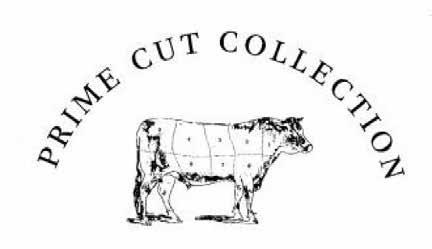
The same applies to insufficiently stylised representations of foodstuffs for goods in Classes 29, 30 and 31.
Simple addition of a clearly legible font and placement of words, as well as descriptive figurative elements for coffee.
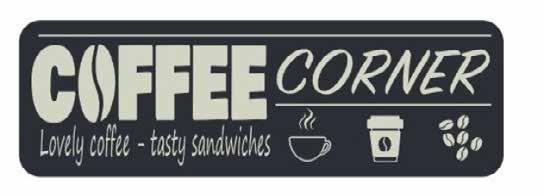
Just the addition of a red/white/blue circle containing a typical Dutch landscape with a cow. These figurative elements are partly descriptive (origin) and partly nondistinctive for products in class 30 (cheese).
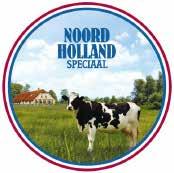
Simple addition of a clearly legible stylized font and simple word layout.

A simple arrangement of two text bubbles. In addition, a text bubble for a chat service is also a common figurative element.

22 Guidelines on Examination of Absolute grounds
83. The Office takes as a starting point here that there is an interaction between the degree of descriptiveness of the verbal element and the required distinctiveness of the figurative element; in simple terms, the more clearly descriptive the word, the more necessary the figurative element is to remedy the lack of distinctiveness. The assessment is always based on the general impression which the mark creates to the relevant public.
23 Guidelines on Examination of Absolute grounds
Article 2.2bis(1)(c) BCIP, descriptive marks
84. Article 2.2bis(1)(c) BCIP is the ground for refusal for descriptive marks. BOIP must refuse trademark applications which consist exclusively of signs or indications which may serve to designate characteristics of the goods or services covered by the application. This ground exists for reasons of public interest, namely the obvious principle that descriptive indications must be freely usable by everyone45. The vast majority of refusals on absolute grounds are based on this ground.
85. The word ‘exclusively’ in this provision serves as a qualifier for the word ‘composed’, not as a qualifier for ‘may be used’. The CJEU has indicated that “a test based on whether the mark is ‘exclusively descriptive’, […] is not the test laid down [in this provision]”46. It is therefore necessary to assess whether a trademark (or a part thereof) may serve to designate characteristics of the goods and services mentioned, without having to take into consideration the fact that (1) there are synonyms, (2) the sign is descriptive only of less (commercially) important characteristics of the goods or services, (3) there are better known or more directly descriptive indications, (4) or the sign may have other meanings47. It follows that it is not necessary for the relevant public to perceive “immediately and without further reflection” a description of one of the characteristics of those goods or services48. Such marks are also descriptive, of course, but the category of descriptive marks is broader than marks which do so in that way.
86. The marks applied for are examined on the basis of linguistic knowledge, dictionaries, the internet, general knowledge and everyday use of the language, in order to determine whether the mark applied for is descriptive within the meaning of that provision.
87. Furthermore, the assessment must take account of the future, as the Office must also consider whether the indication applied for could in the future be descriptive of the goods or services concerned49
Characteristics of products or services
88. For each trademark application, BOIP checks whether the trademark describes one or more characteristics of the goods or services. These are signs and indications which, in normal use, may serve, from the point of view of the relevant public, to designate, either directly or by reference to one of their characteristics, the goods or services for which registration is sought50
89. Article 2.2bis(1)(c) BCIP contains an enumeration of the various characteristics of the goods and services. These characteristics relate to the kind, quality, quantity, intended purpose, value, geographical origin or time of production of the goods or rendering of the service. This enumeration is not exhaustive as the provision ends with the words “or other characteristics of the goods or services”.
90. By kind, it refers to the goods and services themselves and their nature, such as the word “bicycle” for bicycles or “dairy products” for milk.
91. Quality refers, for example, to an indication of quality or a particular characteristic of goods or services. For example, “sugarfree” for soft drinks or “clean in one go” for a laundry product.
45 CJEU, 4 May 1999, C-108/97 - 109/97, Chiemsee, ECLI:EU:C:1999:230; CJEU 12 February 2004, C-363/99, Postkantoor, ECLI:EU:C:2004:86.
46 CJEU, 23 October 2003, C-191/01, Doublemint, ECLI:EU:C:2003:579.
47 CJEU, 12 February 2004, C-363/99, Postkantoor, ECLI:EU:C:2004:86.
48 BenCJ, 16 June 2020, C-2019/6/9, Pet’s Budget.
49 CJEU, 4 May 1999, C-108/97 - 109/97, Chiemsee, ECLI:EU:C:1999:230; CJEU 12 February 2004, C-363/99, Postkantoor, ECLI:EU:C:2004:86.
50 CJEU, 6 September 2018, C488/16, ECLI:EU:C:2018:673, Neuschwanstein; BenCJ, 16 June 2020, C-2019/6/9, Pet’s Budget.
24 Guidelines on Examination of Absolute grounds
92. Quantity refers to indications such as the number of copies of a product, its size or weight. For example, “100” for a puzzle.
93. Intended purpose refers to the desired goal or function of the goods or services. For example, “faster richer” for financial services or “motorcycle” for repair services (as these may be targeting the repair of motorcycles). In addition, they may also include indications specifying the intended audience, such as “toddler gym” or “trips to Spain for people over 50”.
94. Value refers to the price of products or services, such as “cheap” or “more for less”. It can also refer to quality indications, such as “premium” or “superb”.
95. Geographical origin refers to geographical names, such as the names of countries or cities that may describe that the goods or services originate from there. See also paragraphs 116-120
96. The time of production of the goods or provision of the services can be, for example, indications of when the services are provided, e.g. “24/7” or “night shop”, or the duration of their provision, e.g. “since 1920”.
97. In the case of goods and services which, by their nature, have a particular subject matter or theme, such as magazines, books, films or software, a mark may be descriptive if it indicates the content (the subject matter). For example, the indication “distant travels” for a magazine or a travel agency. In this case, it is advisable to indicate specifically, in the list of goods and services, to which the goods and/or services in question relate. The trademark application “ANIMALS” will be refused for magazines in general, as it cannot be excluded that they deal with animals, but it will be accepted for a magazine dealing, for example, with cars.
98. As indicated above, this list is not exhaustive and a trademark application must also be refused if it indicates other characteristics of the goods or services.
Languages in the Benelux
99. Several languages are spoken in the Benelux. Even if an applied-for trademark is understood in its descriptive meaning only by a part of the Benelux public, it follows that it cannot be registered as a trademark.
100. The Office takes into account, for example, the fact that the average knowledge of English in the Benelux is such that it is reasonable to assume that consumers will recognise and understand English words as such. Even in the case of lesser-known languages, it is possible that a mark may be refused if the relevant public understands its descriptive meaning.
Example: The trademark application “ristorante italiano” for restaurant services will be refused because, even though Italian is a less common language in the Benelux, it will still be understood in its descriptive sense by (the vast majority of) the Benelux public.
Example: The application for the trademark “fissa” for organising festivities will be refused because this indication, which originates from Surinam, is part of the popular street language for “party” in the Netherlands.
25 Guidelines on Examination of Absolute grounds
101. A mark may also be qualified as descriptive if it relates to a word in a language which is not (by default) recognised by the general public, but which is recognised by a specific public. If the word has a clear link with the goods and services in question and the goods and services can target the specific part of the public which is proficient in that language, the trademark application must be refused.
Example: BOIP refused the application for the trademark “Holanda Hukuku” for, among other things, legal services, because it means “Dutch law” in Turkish and it is not economically unrealistic that the services could be aimed at a public of Turkish origin and relate to Dutch law. In this case, the specific public that masters the language is such a large group that it justifies the interest in preserving the availability of the sign.
Example: A trademark that consists of the Latin word “capitis” is unlikely to say much to the average Benelux public, but a doctor (or an affected patient knows the meaning, namely “headache”. For this reason, this mark will for example be refused for pharmaceutical products in class 5.
102. For the sake of completeness, it should be noted that if it is a trademark in an official language of the Benelux, its meaning is assumed to be known to (a part of) the public.
Combination of descriptive words
103. If the mark applied for consists of several words, the descriptive character of the mark shall be determined on the basis of the combination thus formed. In so doing, the constituent parts are first examined individually and then the mark as a whole. In general, a mark which is composed of descriptive parts is also descriptive. The outcome would only be different if, because of its composition, it acquires a ‘plus’ and is therefore more than the sum of the parts. This is generally not the case if it is a combination formed by the mere combination of descriptive indications.
Example: The trademark application “neighbourhood care” for, inter alia, medical services, consists of the descriptive words “neighbourhood” and “care”. This combination simply indicates that the care services are provided locally.
104. Thus, in order to be registrable, a composite mark must produce a perceptible difference from the descriptive meaning of the juxtaposed words. Such a perceptible difference exists if the combination contains an unusual turn of phrase, in particular as to syntax or meaning51. Think of a surprising twist, an additional connotation, or a double meaning resulting from the combination formed. In addition, there may be a mark that is so far removed from the meaning of its constituent elements that it is perceived as a neologism that has its own meaning independently of the meaning of the elements of which it is composed. The whole thus formed must therefore also be examined.
Example: The trademark “tabletop” for a restaurant guide will be accepted.
26 Guidelines on Examination of Absolute grounds
51 CJEU 12 February 2004, C-265/00,
Biomild; CJEU 12 February 2004, C-363/99, Postkantoor, ECLI:EU:C:2004:86.
105. The mere fact that an applied-for trademark is not found in a dictionary does not make it possible to infer that it would be a non-descriptive indication. By their nature, dictionaries do not contain all conceivable words, in particular because, according to normal linguistic rules, words may be formed by joining different words together. BOIP assumes in its assessment that it must be in line with economic reality. It must be taken into account that a language evolves rapidly. While dictionaries sometimes lag behind, a brief search on the Internet can show that a particular indication has already gained notoriety as a descriptive indication in the public mind.
106. It is also irrelevant whether a trademark is already being used by other undertakings or whether, for example, alternatives are available52. It is sufficient that a trademark may be used in a descriptive sense.
Example: An application for the trademark “Insurance Doctor”, for services relating to the acquisition and transfer of insurance, will be refused. The designation “doctor” will not only be understood by the public in its medical sense, but also in a figurative sense. Indeed, the term is also commonly used in economic circles to designate a specialisation in the field of the service or product on which persons or undertakings concentrate their economic activities. In this case, it may be a person who repairs something or a specialist who can solve a certain problem. Indeed, the meaning of the term “doctor” in trade goes far beyond the meaning given to it in the dictionary.
Example: The word “factory” is a common term for “shop”, as are “world”, “place” and “point”. For this reason, for example, combinations like suitfactory, musicfactory or phonefactory will be refused for the retail services in question.
107. Words that contain frequently used punctuation marks, currency symbols or symbols replacing letters are usually still descriptive.
Example: The use of the @ sign (pronounced: “at”) is well known and recognized by everyone due to the increase in the use of e-mail and the Internet. If, in a trademark, the word “at” is used in a descriptive sense, replacing that word with the @ sign will not make the sign less descriptive. The same happens when a letter A in a word is replaced by the @ sign.
Similarly: € for E; $ for S; ! for i.
27 Guidelines on Examination of Absolute grounds
Non-existent word
52 CJEU, 23 October 2003, C-191/01, Doublemint, ECLI:EU:C:2003:579.
Common verbal elements
108. The addition of banal verbal elements with which the public is frequently confronted will be perceived as descriptive and is generally insufficient to remove the descriptive character of a mark. For example, this is the case for:
• terms used to convey a positive or laudatory message, such as “super”, “top”, “extra”, “mega”, “ultra”, “gold” or “royal”;
• common shortenings, such as “eco” (for ecological), “medi” (for medical), “pharma” (for pharmaceutical), “sani” (for sanitary) or “lux” (for Luxembourg);
• common abbreviations or acronyms, such as “AI” (for artificial intelligence) or “ECA” (for extracurricular activities);
• common prefixes, such as possessive pronouns or references to persons, such as “mister”, “mademoiselle” or “my”;
• abbreviations of the legal form of companies, such as “s.p.r.l.”, “s.a.” or “Ltd”.
• time indications, such as “24/7” or “365” ;
• telephone numbers or parts thereof, such as “020”, “010” or “0800” ;
• top level domain names (ccTLDs and gTLDs), such as “.com”, “.nl”, “.be” or “.info”.
Example: The application for the trademark MISTER WAFFLES for the sale of waffles will be refused because “MISTER” is a common reference to a person selling things (in this case waffles). Combinations with the word MISTER as a prefix are frequently used in the sale of food products. That is not sufficient to give the mark distinctive character.
Example: The application for the trademark magazines.com for printed matter will be refused because the designation.com only indicates that the goods can also be obtained via the Internet.
109. Word combinations containing a common prefix or suffix in combination with a descriptive indication will also be refused.
Example: The designation “sani” is a commonly used commercial abbreviation for the word “sanitary”. The word “sani” is often used as a prefix in word combinations, such as sanicompany or sanispecialist.be. In such a combination, consumers will understand that the word “sani” refers to sanitary facilities.
110. The above also applies to combinations with common prefixes or suffixes such as -thèque, inno or euro.
Logical abbreviation
111. Marks consisting of the juxtaposition of a sequence of letters that is non-descriptive in itself and a descriptive word combination may be refused if that sequence is perceived by the public as an abbreviation of the preceding or following word combination. The abbreviation often consists of the initials of the words in the combination. The mark concerned, taken as a whole, may thus be understood as a combination of descriptive indications or abbreviations. This is so because the abbreviation associated with the words explains their meaning and underlines the link between them53
Example: Mega Outlet The Hague MODH” will be rejected, because MODH represents only the initial letters of the words in the combination with which it is juxtaposed. The public will therefore only perceive the designation MODH as an abbreviation of the descriptive words. 53 CJEU, 15 March 2012, C-90/11 & C-91/11, Natur-Aktien-Index / Multi Markets Fund, ECLI:EU:C:2012:147.
28 Guidelines on Examination of Absolute grounds
prefix or suffix
Common
112. This may not be the case if the public does not immediately understand that it is an abbreviation of a descriptive phrase. If the abbreviation is independently distinguishable or has its own meaning, it acts as a distinctive element and the sign may be registered as a trademark.
Example: In the trademark application “SLEEP: Stress Level Elimination Exercise Programme”, the designation SLEEP also has another meaning, so that the public will not immediately realize that it is an abbreviation of subsequent descriptive words.
Words with alternative spelling
113. The assessment on the basis of absolute grounds also takes account of the fact that, by their very nature, word marks are not only read but also heard54. The auditory impression produced therefore plays a role in the assessment. For that reason, descriptive words in which, for example, a letter has been replaced by a sign or in which the letter S has been replaced by a Z may also be refused.
Example: An indication such as 4U (pronounced “for you”) can in principle be considered descriptive since the auditory impression of the mark is descriptive.
114. Moreover, it should be noted here that such spelling (influenced, among other things, by the use of social networks), in which words are shortened without losing their meaning, has now become commonplace.
So: expert becomes xpert ; bizz for business.
115. Also, the addition of extra letters in a word is not unusual and is usually used to emphasize the urgency of the message (such as “goooooooo” or “heeeelp”) and the public will therefore not perceive this spelling as an indication of origin in a trademark sense either.
Geographical names
116. Geographical names are generally descriptive. The CJEU provided guidance on the assessment of this issue in the CHIEMSEE judgment55
117. The Court states first of all that, in particular as regards the signs or indications which may serve to designate the geographical origin of the categories of goods or services in respect of which registration of the trademark is sought, there is a public interest in preserving their availability because of their capacity not only to reveal the quality or other characteristics of the categories of goods or services concerned, but also to influence consumer preferences in various ways, for example by linking the goods or services to a place which may arouse positive feelings.
54 CJEU 12 February 2004, C-363/99, Postkantoor, ECLI:EU:C:2004:86.
55 CJEU 4 May 1999, C-108/97 and C-109/97, Chiemsee, ECLI:EU:C:1999:230.
29 Guidelines on Examination of Absolute grounds
118. On the basis of the Chiemsee judgment, the following points are relevant in assessing whether a geographical name should be refused:
1) It must be a geographical name that can be used to designate geographical origin. The “geographical origin” referred to does not only refer to manufacture, but may also be based on other factors, such as the place of design or creation of the product or service.
2) Whether the geographical name is known as such to the public concerned. If this is not the case, for example a small locality outside the Benelux, the public will not know that it is a geographical name and the trademark will therefore not be considered as an indication of geographical origin.
3) The degree of probability that this indication can (start to) serve as a geographical origin in the economic reality. In the case of a mountain or a desert, this may be less obvious.
119. The Court expressly stated that it is not necessary for a place to be already known or reputed for the category of products in question. Indeed, it is clear from Article 2.2bis(1)(c) BCIP that it relates to an indication which may serve to designate the geographical origin. The availability of such indications must be preserved.
Example: The designation ‘Chicago’ for beer must be refused. Even if this city is not known for its beer breweries, this does not exclude that beer can originate from Chicago. However, the application for the trademark Chicago for the services of a laundromat will be registered because it is not economically realistic for a laundromat in the Benelux to have its laundry cleaned in Chicago.
Example: The designation North Pole for swimsuits will be accepted because it is very unlikely that these products are produced or designed there. The same applies to the designation Mont Blanc for pens.
Example: The designation “Stockholm kitchens” can convey to the public the message that the kitchens are designed by a company in Stockholm or that the kitchens have a certain aesthetic quality. Indeed, Scandinavian countries are known for their specific design style (clean and minimalist). Thus, the Office would have to refuse in this case.
120. Nevertheless, a geographical (descriptive) name can acquire a distinctive character through use. The application can then be registered as a trademark. In this case, third parties will be protected against this monopoly by the possibility of relying on the restrictions of Article 2.23(1)(b) BCIP.
INN (International non-proprietary names)
121. An International Non-proprietary Name (INN) is an internationally agreed name for a pharmaceutical substance, which is assigned by the World Health Organization (WHO). Each INN is unique and internationally recognized. The INN is also referred to as a “generic” indication for an active substance in a medicine.
122. The INN is therefore descriptive of a component of a medicinal product. An application for a trademark consisting of an INN for goods and services relating to medicinal products will therefore be refused if it does not contain any other distinctive element.
Example: The trademark application consisting of the name Metronidazol for pharmaceutical products in class 5 would be refused because it concerns an INN.
30 Guidelines on Examination of Absolute grounds
Known titles or names of known persons
123. Trademark applications which consist solely of a title of a famous story, book, film or song may be refused for the goods and services for which these may be the subject matter. This may also apply to the names of (very) famous persons whose names may also be the subject matter of, for example, a book, a film, a musical or a play, such as Amadeus or Johan Cruijff. In such cases, it must be plausible that the title or name in question is known to the relevant public and that it will not be perceived as a trademark, but as an indication of the subject matter or theme of the goods and services in question.
Example: The name ‘Cinderella’ can be perfectly used as a trademark for clothing or cleaning services. However, it is not distinctive in relation to books or films, for example, because the consumer will simply think that these goods are about the famous fairy tale.
New concept
124. The descriptive name of a new product or service will also be refused. In this case, the relevant public will not perceive the sign as a trademark capable of distinguishing the goods or services offered by the applicant, but in a descriptive sense. Trademark law is not intended to monopolize goods or services. This cannot be reconciled with free competition and the raison d’être of other protection regimes in the field of intellectual property.
Example: When the “vacuum cleaner robot” was introduced, the public may not have been familiar with the name at the time, but was still able to recognize a description of the characteristics of the underlying product and not the producer who commercialises it.
Descriptive figurative marks
125. If an applied-for trademark consists of a figurative element which does not differ or differs only slightly from a natural representation of the goods themselves or of a characteristic to which the goods and services relate, that trademark shall be refused if it does not contain any other distinctive element. Even if, as a result of stylisation, the representation is not exactly identical to the actual product, it cannot by definition be concluded that the sign applied for has sufficient distinctive character to function as a trademark. If the public merely perceives the representation as a representation of the product in question, BOIP will refuse the trademark application because it cannot be inferred that the product originates from a specific undertaking.
31 Guidelines on Examination of Absolute grounds
126. For this reason, BOIP refused the following signs:
Cl 29 beef

Cl 29 and 31 peanut butter and peanuts
Cl 29 cooked vegetables
Exclusion of certain properties
127. A mark which is refused because it is descriptive of the (characteristics of the) goods or services indicated in the application may not be registered on condition that the goods or services do not possess those characteristics. Such a “negative” addition to the list of goods and services cannot overcome the objections of the Office and is contrary to the system of trademark protection provided for in the European Trademark Directive (see also paragraph 30)56
Example: The trademark application ‘blueberry’ is descriptive for wine, because wine can be made from blueberries. An adapted list such as ‘wines, except blueberry wine’ is not accepted by BOIP.
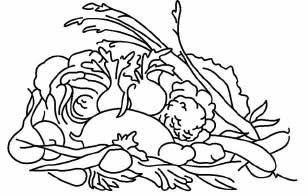
56 CJEU 12 February 2004, C-363/99, Postkantoor, ECLI:EU:C:2004:86.

32 Guidelines on Examination of Absolute grounds
Article 2.2bis(1)(d) BCIP, customary indications
128. Article 2.2bis(1)(d) BCIP provides a ground for refusal for trademark applications which were distinctive at an earlier stage, but which have become, in current language or in trade, a customary indication for the goods and services concerned57
129. A trademark will only be refused if the examination clearly shows that in the relevant sector the sign is not (or no longer) perceived by the relevant public as a trademark, but as a customary indication for the goods and services for which the trademark was applied for. This may be the case if many different suppliers of the goods or services in question use the sign as a generic indication. As a general rule, a refusal on the basis of point (d) also means a refusal on the basis of point (c) (descriptive).
Example: In the case of a new product or invention, the name chosen, if no generic term exists or is introduced, risks becoming the usual commercial term for this concept or product. Indeed, it serves as a generic name, although new. In the past, for example, “gramophone”, “claxon” or “pilates” have become generic terms for the products and services in question.
33 Guidelines on Examination of Absolute grounds
57
CJEU 4 October 2001, C-517/99, Bravo, ECLI:EU:C:2001:510.
Article 2.2bis(1)(e) BCIP, shape or other characteristic
130. Article 2.2bis(1)(e) BCIP forms the basis for the refusal of signs consisting exclusively of the shape or other characteristic which: (i) results from the nature of the goods themselves, or (ii) is necessary to obtain a technical result or (iii) gives substantial value to the goods.
131. These grounds for refusal are intended to prevent that, by granting a (potentially perpetual) trademark right, the holder of that right acquires a de facto monopoly on a shapes or characteristics of goods for which other protection regimes (patent law, design law, copyright) are provided and for which the legislator has deliberately opted for a limited period of validity58 Trademark law is not intended to serve as an extension of the duration of legal monopolies which have come to an end in the meantime59
132. The special grounds for exclusion are absolute. If one of these grounds for exclusion applies, the mark may not be registered even if it has acquired distinctive character60. Indeed, Article 2.2bis(3) BCIP only plays a role in remedying the lack of distinctive character as referred to in Article 2.2bis(1)(b), (c) and (d).
133. The shape of the product shall also be understood to mean the shape of the packaging of the product if it is by its nature devoid of shape and is, or can be sold, only in packaged form61.
134. Article 2.2bis(1)(e) BCIP applies not only to three-dimensional marks but also to all other types of marks such as a figurative mark (where it is not specified that it is a three-dimensional mark) which consist exclusively of the representation of the product or the packaging. Also, in that case, the mark does not consist of a sign that is independent of the appearance of the product which it designates62
135. This is an objective assessment. That means that, in order to determine whether those grounds are applicable, the presumed perception of the sign by the consumer is not a decisive factor, but at most a useful element of assessment for identifying the essential characteristics of the sign63
136. The addition of ‘another characteristic’ is relatively recent64. The meaning of this addition still needs to be clarified in practice, and the CJEU has not yet provided guidance on the matter. However, it is clear that this ground for exclusion no longer applies only to three-dimensional trademarks65. For “another characteristic”, one can think, for example, of a non-three-dimensional characteristic of the product, such as a decorative pattern or colour on clothing, furniture or curtains. It may also include motion or sound used for the operation of devices.
58 CJEU18 June 2002, C-299/99, Philips-Remington, ECLI:EU:C:2002:377.
59 CJEU18 14 September 2010, C-48/09, LEGO, EU:C:2010:516; CJEU18 18 September 2014, C-205/13, HAUCK, EU:C:2014:2233.
60 CJEU 18 June 2002, C-299/99, Philips-Remington, ECLI:EU:C:2002:377.
61 CJEU, 12 February 2004, C-218/01, Henkel, ECLI:EU:C:2004:88.
62 CJEU, 22 June 2006, C-25/05, Storck 2, ECLI:EU:C:2006:422; CJEU, 4 October 2007, C-144/06, Henkel-tablet, ECLI:EU:C:2007:577.
63 CJEU 18 September 2014, C-205/13, HAUCK, EU:C:2014:2233.
64 Introduced during the implementation of Directive (EU) 2015/2436 of the European Parliament and of the Council of 16 December 2015 to approximate the laws of the Member States relating to trade marks.
65 See for the distinction between shapes and other characteristics the cases CJEU, 12 June 2018, C163/16 ECLI:EU:C:2018:423, Louboutin and 14 March 2019, C21/18 ECLI:EU:C:2019:199, Textilis - Svenskt Tenn Aktiebolag.
34 Guidelines on Examination of Absolute grounds
Essential characteristics
137. The condition that the sign must consist ‘exclusively’ of the shape or other characteristic of the goods is fulfilled where all the essential characteristics, that is to say, the most important elements, of the shape result from the nature of the goods, fulfil a technical function or give substantial value to the goods66. The presence of one or more arbitrary minor elements therefore does not affect the conclusion that a sign consists exclusively of the shape or other characteristic of the product covered by one of the three abovementioned grounds for exclusion. However, if the sign is combined with a distinctive element, such as a word, logo or ornamental element, which plays an important role in that shape, the sign no longer exclusively consists of the shape or other characteristic of the product. In that case, the sign cannot be refused on the basis of Article 2.2bis(1)(e) BCIP.
138. The essential characteristics must be identified on the basis of the overall impression given by the sign or a successive examination of each constituent element of the sign67. The identification of the essential characteristics may be carried out by a simple visual analysis of the sign or, on the contrary, may be based on a detailed examination in which account is taken of factors relevant to the assessment, such as consumer surveys and expert opinions, or records relating to intellectual property rights previously conferred in relation to the product concerned, such as patents68
139. The three grounds for refusal of registration provided for in this provision are autonomous and must therefore be applied independently of each other69. This means that once the essential characteristics have been established, it must be verified whether all these characteristics either result from the nature of the product or give substantial value to the product or are necessary to obtain a technical result70. The essential characteristics must all be covered by one of these variants. If, for example, the essential characteristics of a shape consist partly of functional characteristics and partly give substantial value to the product, there can be no question of a refusal on the basis of Article 2.2bis,(1)(e)(ii) or (iii), BCIP.
Nature of the goods
140. If a sign consists exclusively of the shape or other characteristic which results from the nature of the goods themselves, it shall be refused. This ground for exclusion applies, for example, where the sign consists exclusively of the natural shape of an object. As a result, the shape of an egg carton will be refused because that shape is imposed by the shape of an egg.
141. This ground may also apply to so-called “regulated” products, the form of which is prescribed by standards. In addition, the registration of shapes whose essential characteristics are inherent in the generic function or functions of that product may also be refused71
66 CJEU 14 September 2010, C-48/09, LEGO, EU:C:2010:516; CJEU 18 September 2014, C-205/13, HAUCK, EU:C:2014:2233.
67 CJEU 14 September 2010, C-48/09, LEGO, EU:C:2010:516.
68 CJEU 14 September 2010, C-48/09, LEGO, EU:C:2010:516.
69 CJEU 18 September 2014, C-205/13, HAUCK, EU:C:2014:2233.
70 CJEU 14 September 2010, C-48/09, LEGO, EU:C:2010:516.
71 CJEU 18 September 2014, C-205/13, HAUCK, EU:C:2014:2233.
35 Guidelines on Examination of Absolute grounds
Technical result
142. A sign consisting exclusively of the shape or other characteristic necessary to obtain a technical result shall be refused even if the technical result in question can also be obtained by other shapes72. The question is only whether the shape or characteristic has a technical function (in the literature this is also called “device-oriented doctrine”) and it is irrelevant whether there is an alternative (in the literature this is also called the “result-oriented doctrine”).
143. When analysing the functionality of a sign, the essential characteristics must be assessed in the light of the technical function of the actual products in question73
144. Examples of refusals:
e.g. for keys in class 6
e.g. for dressing dispensers in class 20
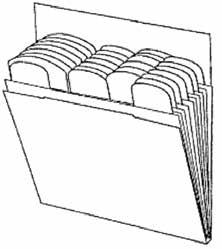
e.g. for toys in class 28
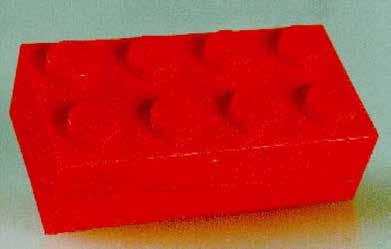
Substantial value
145. If a shape or other characteristic gives substantial value to the product, it must be refused as a trademark. The justification seems to lie in particular in the prevention of a monopoly for a certain shape for which protection could in principle be obtained through design or copyright law.
146. The assessment of the essential characteristics may take into account the nature of the relevant category of products, the artistic value of the shape in question, its dissimilarity from other shapes in common use on the market concerned, a significant price difference in relation to similar products or the development of a promotional strategy which focuses on accentuating the aesthetic characteristics of the product in question74
Example: An application for the shape of a vase for the product “vases” will be refused because this shape gives substantial value to the product. A consumer will buy such a product in particular because he likes the shape and, if he does not like the shape, he will refrain from buying it.
72 CJEU 18 June 2002, C-299/99, Philips-Remington, ECLI:EU:C:2002:377.
73 CJEU 14 September 2010, C-48/09, LEGO, EU:C:2010:516 and CJEU 10 November 2016, C-30/15, Rubik Cubes, ECLI:EU:C:2016:849.
74 CJEU 18 September 2014, C-205/13, HAUCK, EU:C:2014:2233.

36 Guidelines on Examination of Absolute grounds
147. The notion of “shape which gives substantial value to the product” should not be limited to the shape of products which have an exclusively artistic or ornamental value. This absolute ground for refusal cannot therefore be automatically excluded where the product in question performs, in addition to its aesthetic function, other essential functions, such as the shape of a child’s chair which, in addition to its ‘attractive’ appearance, is also safe and easy to use75
148. Examples of refusals:
75 CJEU 18 September 2014, C-205/13, HAUCK, EU:C:2014:2233.
For jeans in class 25
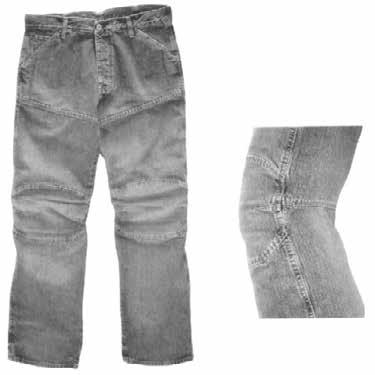
For loudspeakers in class 9
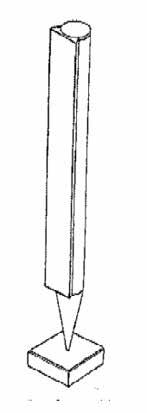
37 Guidelines on Examination of Absolute grounds
Article 2.2bis(1)(f) BCIP, trademarks contrary to public policy or morality
149. In accordance with Article 2.2bis(1)(f) BCIP, BOIP refuses trademark applications that are contrary to public policy or to accepted principles of morality in the Benelux. In practice, this ground for refusal is very rare. It is not a question of whether the trademark can be used for prohibited purposes. The manner in which the trademark is used is irrelevant. The question is whether the trademark itself contains an element contrary to public policy or morality, irrespective of the goods or services to which the trademark relates.
150. This article deals with concepts which are not interpreted in more detail in the BCIP, but which must be interpreted taking into account their usual meaning and the context in which they are usually used. The case law relating to this provision is limited. The CJEU ruled on this subject in the Fack Ju Göhte case, where the Advocate General examined in particular the distinction between the concepts of “public policy” and “accepted principles of morality” in his Opinion76
151. It can be inferred from this case that the concept of “public policy” is an assessment based on objective grounds. Something is contrary to public policy if it is contrary to the laws and regulations as defined by the public authorities in the Benelux. In this context, reference can also be made to the judgment of the European Free Trade Association (EFTA) Court in the Vigeland77 case, in which it was held, inter alia, that in the case of a trademark which consists exclusively of a work in the public domain, the public interest precludes, in exceptional cases, the monopolisation of that sign.
152. The notion of “accepted principles of morality” refers to the fundamental moral values and norms to which a given society attaches importance at a given time. This assessment is based on subjective grounds. It relates to the question whether, at the time of examination, a sign is perceived by the relevant public as contrary to the fundamental moral values and standards prevailing in that society at that time. In Fack Ju Göhte, the Court further held that this assessment must be based on the perception of a reasonable person with average thresholds of sensitivity and tolerance, taking into account the context in which the mark is likely to be encountered and, where appropriate, the particular circumstances of the case in, in this case, the Benelux. To that end, elements such as legislation and administrative practice, public opinion and, where appropriate, the way in which the relevant public has reacted in the past to that or similar signs, and any other element which may make it possible to assess the perception of that public, are relevant.
Examples:
Symbol of the Red Cross
The “Red Cross” symbol is protected by the First Geneva Convention of 1949. This symbol is of such public interest that its use is contrary to public order.
Swastika
A trademark application containing a representation of the Nazi swastika (the swastika) will be refused because it is the expression of a racist ideology and therefore contrary to public order or morality.
A.C.A.B.
The abbreviation A.C.A.B. stands for ‘all cops are bastards’ and is an insult to an officer in the performance of his duties. For this reason, this mark is contrary to public order or morality.
38 Guidelines on Examination of Absolute grounds
76
CJEU 27 February 2020, C-240/18, Fack Ju Göhte and Opinion of Advocate General Bobek of 2 July 2019. 77 EFTA Court 6 April 2017, Municipality of Oslo, E-5/16, Vigeland.
Article 2.2bis(1)(g) BCIP, deceptive mark
153. According to Article 2.2bis(1)(g) BCIP, a trademark must be refused if it is liable to deceive the public, for example, as to the nature, quality or geographical origin of the goods or services.
154. Deception occurs when the trademark misleads the public by creating an erroneous impression about, for example, the composition or origin of a product. If this is the case, a trademark will be (partially) refused.
Example: The representation of a package (e.g. a label) containing the word “salmon” may deceive the public if it is used for foods such as chicken, beef or tuna. If the trademark application is made for such products, it will be partially refused. This also applies if “Salmon” is by chance the surname of the trademark owner.
155. A trademark may be refused on the basis of this Article only if it is possible to establish the existence of actual deception or a sufficiently serious risk of deception of the consumer78. This will mainly concern indications in a trademark which play a decisive role in the public’s choice of a given product or service79
Example: A trademark application with the designation “vegaburger” is misleading for meat and fish products. The consumer will certainly have a specific, very relevant expectation with this indication, which does not correspond to reality if the sign is used for meat and/or fish products.
156. In its assessment, the Office shall take into account the relevant public, the goods and/or services in question and the economic reality.
Example: It will not be required for a mark with the designation “coffee house” for Class 43 (among other cafés and restaurants) to be registered only for an establishment where only coffee is served. It is customary for a café to serve not only coffee but also other beverages and food. The public will therefore not be deceived in this case.
157. A trademark shall not be refused if the list of goods for which it is applied for contains terms formulated in such a way as to permit non-misleading use of the trademark.
Example: A trademark application containing the term “jenever” will not be refused if it is applied for “alcoholic beverages”. Indeed, this term includes jenever, so that the mark can be used for this purpose in a manner that is not misleading. If the same mark is applied for in respect of the product “whisky”, it can only be used in a misleading manner and the mark will have to be refused.
158. Finally, it is important in this context that a final (partial) refusal based on deception can in most cases be prevented by a limitation of the list of goods focusing on products for which the trademark is not deceptive.
39 Guidelines on Examination of Absolute grounds
78 CJEU 30 March 2006, C-259/04, Emanuel, EU:C:2006:215. 79 BenCJ 20 December 1996, A95-2, Europabank.
Article 2.2bis(1)(h) BCIP, Article 6ter of the Paris Convention
159. Article 2.2bis(1)(h) BCIP excludes from registration those trademarks which, in the absence of authorization by the competent authorities, are to be refused or invalidated under Article 6ter of the Paris Convention. These are trademarks containing flags, emblems and other official signs and hallmarks of countries or international organisations.
160. This ground for refusal is intended to prevent that the right of the authority concerned to control the use of the symbols of its sovereignty be adversely affected and to prevent the public from being misled as to the origin of the goods or services for which such marks are used.
161. For flags and other country signs, the ground for exclusion is absolute. In the case of flags and other signs of international organisations, the ground for exclusion applies only if the use and registration are such as to give the public the impression that there is a link between the organisation and the mark.
162. Country flags are covered by this ground for exclusion by law. For other signs, whether of countries or organisations, this applies only if they have been notified by the competent authority. Information on signs notified under Article 6ter of the Paris Convention can be found in the WIPO Article 6ter database (https://www.wipo.int/ipdl/en/6ter/search-struct.jsp).
Example: Apart from the names and abbreviations (in different languages) of the Organisation, the Benelux Organisation for Intellectual Property has notified the following emblems, among others:
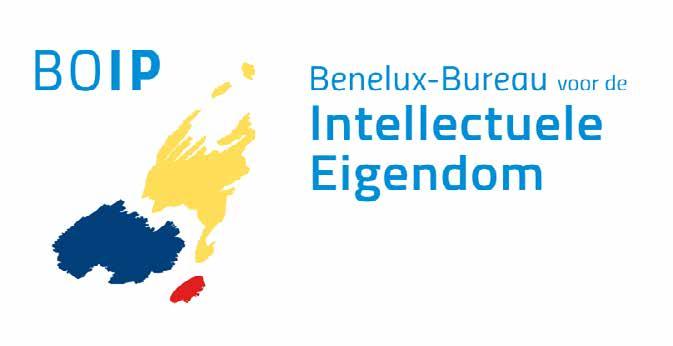

40 Guidelines on Examination of Absolute grounds
6ter nummer: BX29
6ter nummer: BX28
163. The ground for exclusion applies not only to marks consisting of flags and other signs protected under Article 6ter of the Paris Convention, but also to marks containing them (provided they are legible or perceptible). In addition, the flag or sign need not be copied identically. Article 6ter of the Paris Convention also refers to “any imitation from a heraldic point of view”. What exactly is meant by “heraldic imitation” is not mentioned in the Paris Convention. In view of the rationale behind this provision, BOIP assumes in its assessment that this will not easily be the case and that the essential elements of the flag or sign must have been reproduced in the mark in such a way that the public unequivocally recognises it as an imitation. For example, in the case of a flag composed exclusively of a few coloured stripes, the essential characteristics are not only the colours, but also the height/width ratio, the positioning and the proportion between the coloured stripes. In the case of a flag containing recognizable figurative elements, the adoption of these elements may sooner lead to a heraldic imitation. Furthermore, if other (verbal) elements in the mark refer to the country or organisation in question, this may make the public more likely to recognise a heraldic imitation.
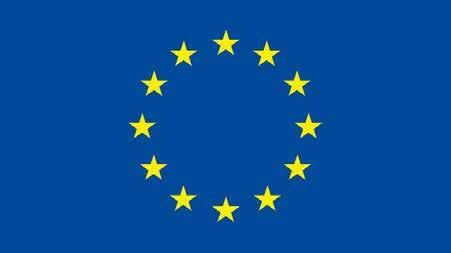


For example: Protected sign Article 6ter Trademark
By omitting the colours, it is not a heraldic imitation.

The sign contains a white cross against a red coat of arms. It is so recognizable that it will still be recognized as a heraldic imitation, even if reproduced in black and white. In addition, the verbal element reinforces the reference to Switzerland.
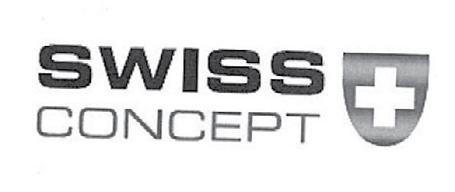
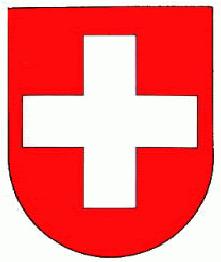
Although the blue background is absent, the use of the characteristic yellow stars (reinforced by the blue words) leads to a heraldic imitation.

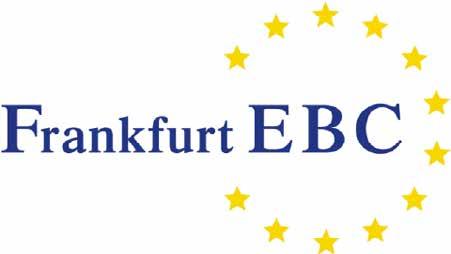
Although the colours blue and yellow are repeated and the mark also contains stars, this is differs enough not to be a heraldic imitation.
164. The exclusion referred to in Article 6ter of the Paris Convention applies subject to the authorisation of the country or organisation in question. A provisional refusal will be reconsidered if it is shown that authorisation has been obtained. The person competent to grant such authorisation depends on the constitutional or conventional organisation of the country or organisation in question. For example, for the emblems and other signs of the Benelux Organisation for Intellectual Property (the BOIP logos) mentioned above, the Director General may grant this authorisation because, in accordance with Article 1.4 BCIP, he represents the Organisation.
41 Guidelines on Examination of Absolute grounds
Article 2.2bis(1)(i), (j), (k), and (l) BCIP, trademarks excluded from registration on the grounds of contravention of the conventions on geographical or product indications; “agri” protection
165. Under Article 2.2bis(1)(i), (j) and (k) BCIP, indications relating to agricultural products enjoy special protection. These are indications for which registration as a trademark is excluded on the basis of regulations external to the BCIP. These indications must be refused registration by BOIP on absolute grounds.
166. Point i deals specifically with regulations providing for the protection of designations of origin and geographical indications protected under Union legislation, the national law of one of the Benelux countries or international agreements to which the EU is a party. The exact scope of protection derives from the basic instrument in question and not from the BCIP. The best-known examples are “protected designations of origin (PDOs)” and “protected geographical indications (PGIs)”. According to regulations EU 1308/2013 (wines), EU 1151/2012 (agricultural products and foodstuffs), EU 2019/787 (spirits) and EU 251/2014 (aromatised wines), the geographical indications used for certain products can be included in the corresponding European registers. If this is the case, these geographical indications, when applied for as trademarks for goods in classes 29, 30, 31, 32 and 33, are excluded from protection as trademarks. The application will be refused on the basis of point i. This applies to both PDOs and PGIs. Since they are geographical indications, they may also be descriptive within the meaning of Article 2.2bis(1)(c) BCIP.
167. If protected geographical indications are not applied for as a purely word mark, but as part of a combined word/figurative mark in such a format that no grounds for refusal under b or c apply, they may be registered only for products covered by the protection enjoyed by the geographical indication in question. Such applications will be partially refused, in particular for products which do not comply with the existing protection of that indication. Such refusal may be lifted by limiting the list of products.
Example: an application for a word and figurative trademark for “wines” containing the verbal element “Burgundy” should be limited to the product: wines meeting the specifications of the protected designation of origin “Burgundy”.
168. Traditional terms for wine, which are protected by Union legislation or international agreements to which the EU is a party, are also refused. Point j provides for this. These include terms such as ‘château’, ‘grand cru’, ‘primeur’. These are designations of certain characteristics of wine which are so described and which are protected on the basis of EU Regulation 1308/2013. Point j therefore applies only to applications which include wine in the broad sense of the term.
169. Point k excludes the registration of indications of traditional specialities guaranteed in the same way as point j. EU Regulation 1151/2012 governs the protection of these indications. They are not geographical indications, no link with a particular place or region is protected. They are indications that protect a certain traditional production method and allow producers who use them to benefit from the added value characteristics of that indication. This ground for refusal concerns foodstuffs.
Examples: Dutch “boerenkaas”, the Belgian beers Kriek and Geuze.
170. The refusals referred to in points (j) and (k) may also be lifted by indicating that the products in question meet the definition or the conditions of use of the relevant traditional term for wine or the product specifications of the traditional speciality guaranteed (see example above).
42 Guidelines on Examination of Absolute grounds
Examination
171. In order to check whether certain trademark applications should be refused under Article 2.2bis(1)(i), (j) and (k), the Office uses, inter alia, the EU databases for these indications. The protected geographical indications are listed in the E-Ambrosia database. Traditional wine indications are listed in the E-Bacchus database and in the GIview database The DOOR database contains traditional specialities guaranteed.
Plant Varieties
172. Article 2.2bis(1)(l) is relevant in the case of plant variety denominations, and therefore only in the case of applications in Class 31. A breeder who creates a variety can obtain a “plant variety right” for it, so that only he can commercialize that variety. The name of the variety is automatically the indication of its species, which must be freely usable by all, both before and after the expiration of the plant breeders’ right. As a consequence of point l, therefore, plant variety denominations cannot be registered as a trademark, not even by the breeder who created the variety.
173. A new variety denomination shall be registered with the competent authorities and entered in the CPVO database. If a name for a given plant variety has been registered there - even if the registration has expired in the meantime - it must therefore be refused as a trademark for the plants of the variety concerned, or for a closely related variety. However, this applies only to a trademark or an essential element thereof which is identical to the name of the protected plant variety, and thus not to its variants.
Example: The plant variety denomination Joy is registered for roses. An application for the trademark “Joy plants” for “tulips, roses and cacti” in class 31 will be partially refused for the goods “roses”. The trademark element “plants” is exclusively descriptive, so that “Joy” is in this case an essential element of the mark. If the mark was applied for “live flowers and plants”, it can only be registered if “except roses” is added.
174. To check whether this ground is applicable, the CPVO Variety Finder search tool can be used. The plant variety denominations contained in this register are all relevant for the ground for refusal referred to in point l, irrespective of their origin. In fact, they are all protected plant varieties which enjoy reciprocal protection in member countries under the UPOV Convention.
43 Guidelines on Examination of Absolute grounds
Article 2.2bis(3) BCIP, acquisition of distinctiveness through use (acquired distinctiveness)
175. If a trademark has no distinctive character, it may acquire it through use. This is called acquired distinctiveness. According to Article 2.2bis(3) BCIP, a trademark is not refused under Article 2.2bis(1)( b), (c) or (d) if, as a result of the use made of it, it has acquired distinctive character prior to the date of application for registration. This provision is an exception to the rule that signs which are not distinctive, descriptive or which have become customary may not be registered as trademarks. Since it is an exception to the rule, which sets aside the public interest underlying the grounds for exclusion, the bar for acquired distinctiveness is high.
176. Acquired distinctiveness occurs when a significant proportion of the relevant public has come to perceive a sign that was initially (ab initio) devoid of distinctive character, as a result of the use made of it, as an indication that the goods or services for which it is applied for as a trademark originate from a particular undertaking. The sign has thus acquired a new meaning, so to speak, which is no longer descriptive or non-distinctive and has therefore become capable of distinguishing the goods or services in question from those of other undertakings. Acquired distinctiveness is generally the result of (very) long and intensive use, but this need not always be the case.
Example: For example, in the case of a (sports) event that is making world news, the process of acquiring distinctiveness can take place relatively quickly, sometimes even within a few days.
177. It is up to the applicant or his representative to prove acquired distinctiveness. BOIP does not examine it on its own initiative. As evidence, all evidence may be submitted, in particular, concerning the market share held by the mark; how intensive, geographically widespread and long-standing use of the mark has been; the amount invested by the undertaking in promoting the mark; the proportion of the relevant class of persons who, because of the mark, identify goods as originating from a particular undertaking; and statements from chambers of commerce and industry or other trade and professional associations. Opinion polls may also be submitted80.
178. It should be stressed that mere proof of use of a trademark is not sufficient to prove acquired distinctiveness. The question is whether, as a result of the use which has been made of it, the sign is now actually perceived by the relevant public as a trademark for the goods or services for which it was applied for. The documents submitted must show this clearly and convincingly. It is important that the documents contain objective data and give an overview of the market for the goods or services in question as a whole and of the position of the mark applied for within that whole. Furthermore, the circumstances in which the conditions for acquiring distinctiveness are fulfilled cannot be determined solely on the basis of general and abstract data, such as certain percentages. This must be assessed on a case-by-case basis, taking into account the nature of the goods or services, the public concerned and all other relevant circumstances.
44 Guidelines on Examination of Absolute grounds
80 CJEU 4 May 1999, C-108/97 - 109/97, Chiemsee, ECLI:EU:C:1999:230.
179. Geographically too, the bar of acquired distinctiveness is high. From the point of view of trademarks, the Benelux is an indivisible territory. This means that a sign can only be a valid trademark if it is valid throughout the Benelux. Acquired distinctiveness will therefore always have to be demonstrated throughout the Benelux, or in any case where the trademark was devoid of any distinctive character ab initio81. For a word that is, for example, descriptive in English, assuming that its meaning is understood in the whole of the Benelux, it will therefore also be necessary to demonstrate that it has acquired distinctiveness in the whole of the Benelux. The same applies to “linguistically neutral” marks, such as colour or three-dimensional marks. However, a word that is only descriptive in Luxemburgish, for example, will only have to acquire distinctiveness in relation to that part of the Benelux public that understands that language. An exception to this principle is the situation in which the trademark contains a geographical limitation in relation to the goods and services for which it was applied for.
Example: A local newspaper like “Le Quotidien de Namur” will, by nature, only be read in this region, so that in principle, acquired distinctiveness in this region will suffice.
180. Acquired distinctiveness can only lift the three grounds for refusal referred to in Article 2.2bis(1)(b), (c) and (d) BCIP. This does not apply to all other grounds for refusal. If a refusal is based on one of the three above-mentioned grounds as well as on another ground, acquired distinctiveness cannot provide a solution.
Example: A three-dimensional mark is refused on the basis of both Article 2.2bis(1)(b) (lack of distinctive character) and Article 2.2bis(1)(e) (specific grounds for signs concerning the shapes and other characteristics of the goods). If acquired distinctiveness is proven, the first ground is lifted, but the second remains in force, so that registration is still refused.
181. As already mentioned, within the framework of the examination on absolute grounds, it must be demonstrated that acquired distinctiveness occurred before the date of the application for registration. The documents must therefore predate that date or, in any event, relate to facts and circumstances prior to that date. Supporting documents may already be submitted with the application or in response (when objecting, whether or not subsidiary) to a provisional refusal (see paragraph 11). It is not sufficient to send documents. Indeed, BOIP cannot be expected to extract from these documents any arguments that may be contained therein. It is up to the applicant to determine what arguments and facts he wishes to present and if he submits documents to support them, he must explain the purpose thereof. In addition, especially if a large volume of documents is involved, it is advisable to attach a table of contents. The transmission, like any other communication with BOIP, should preferably be done digitally (see paragraph 16). It is not necessary for the documents to be drafted or translated into the language of the application or objection. All documents can be submitted in their original language. Since the documents must relate to use in the Benelux, it goes without saying that they are normally drawn up in a language that is understood in the Benelux.
45 Guidelines on Examination of Absolute grounds
81 CJEU 7 September 2006, C-108/05, EUROPOLIS, ECLI:EU:C:2006:530; BenCJ, 16 June 2020, C-2019/6/9, Pet’s Budget; BenCJ, 16 June 2020, C-2019/5/6, Sports direct.
46 Guidelines on Examination of Absolute grounds


































